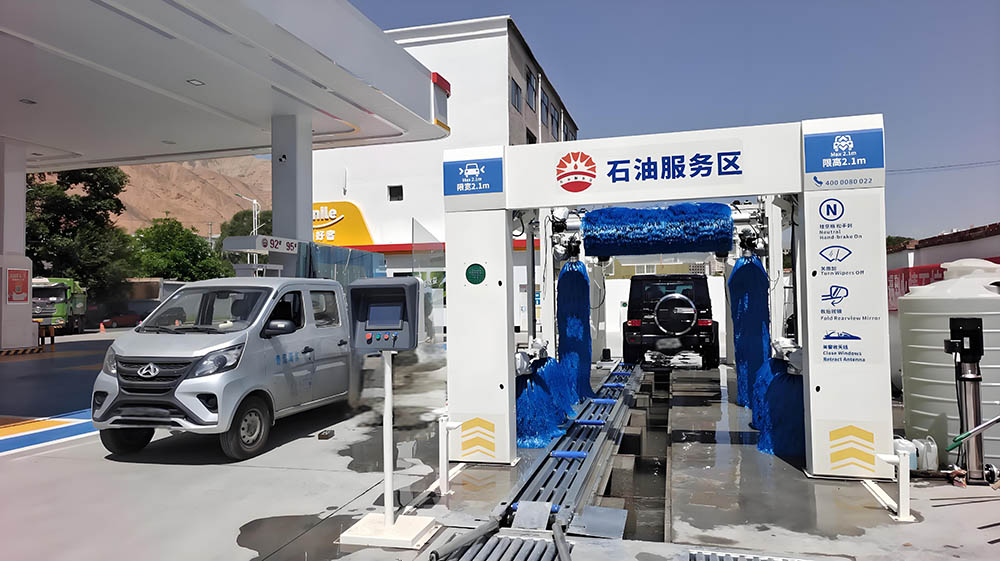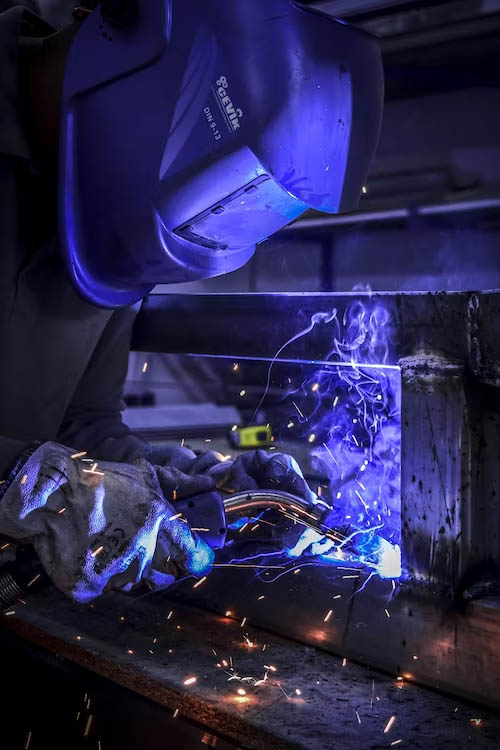At first glance, car washes seem straightforward: drivers pull in, machines work magic, and cars roll out clean. But for business owners, choosing between in-bay automatic car wash systems and conveyorized tunnel car wash systems is a high-stakes decision—one that impacts everything from startup costs to long-term revenue. Let’s break down these systems to help you pick the right fit for your site, budget, and customers.
1. In-Bay Automatic Car Wash Systems: Compact, Cost-Effective, and Customer-Friendly

How They Work:
In-bay systems keep vehicles stationary while automated equipment moves around them. Advanced sensors guide drivers into position, eliminating complex conveyor mechanisms—ideal for smaller lots or tight spaces like gas stations.
Key Features:
- Touch-Free or Friction Options: High-pressure sprays or soft-cloth brushes.
- Low Upfront Costs: Typically under $200,000 for equipment and setup.
- Impulse Purchases: Quick, no-fuss service for busy customers.
Best For:
- Gas stations or convenience stores need compact solutions.
- Businesses in areas with moderate vehicle traffic.
Real-World Example:
A gas station in Phoenix saw a 20% increase in revenue after installing an in-bay system. Drivers appreciated the 5-minute wash while refueling, proving that convenience drives repeat business.
2. Conveyorized Tunnel Car Wash Systems: High Volume, High Investment

How They Work:
Vehicles are pulled through a tunnel via a conveyor belt, with equipment performing cleaning stages sequentially. Full-service models add vacuuming, interior wiping, and detailing.
Key Features:
- Scalability: Processes 120+ cars/hour vs. 15–20/hour for in-bay.
- Premium Pricing: Customers pay more for express or full service.
- High Startup Costs: $1.5M–$ 2 M+ for equipment and infrastructure.
Best For:
- Standalone facilities with space for 80–120-foot tunnels.
- Locations near highways or high-traffic urban hubs.
Case Study:
A tunnel wash in Dallas boosts profits by offering memberships—$30/month for unlimited washes. With 500+ subscribers, it generates predictable revenue even during slow seasons.
3. Critical Factors in Choosing Your System
Site Constraints:
- Space: In-bay systems need 30×40 feet; tunnels require 80+ feet.
- Location: Busy intersections or gas stations favor in-bay, while standalone lots suit tunnels.
Water Restrictions:
Retail car washes use 60% less water than home washing—a major selling point in drought-prone regions like California.
Customer Demand:
- Speed vs. Service: Urban drivers prioritize quick washes; suburbs may prefer premium detailing.
- Membership Models: Tunnels excel here, locking in recurring revenue.
Labor Costs:
In-bay automatics run with minimal staff, while tunnels often require attendants for upselling and quality control.
4. The Financial Bottom Line
- In-Bay ROI: Lower upfront costs mean faster breakeven (2–3 years) but smaller margins.
- Tunnel ROI: Higher startup costs but potential for 5–7x revenue through volume and add-ons.
Choosing the wrong system can drain resources, but the right one transforms your car wash into a profit engine. Unsure which aligns with your goals? Book a free consultation with our engineers. We’ll analyze your site, local demand, and budget to recommend a tailored solution and provide a detailed quote within 24 hours.

Why Trust Us?
With 15+ years in car wash system design, we’ve helped 500+ businesses maximize ROI. Our engineers don’t just sell equipment—we build strategies to future-proof your investment against rising water costs and competition.
FAQ Section
- “Can I upgrade from in-bay to tunnel later?” Yes—we design modular systems for scalability.
- “What’s the average maintenance cost?” In-bay: $5k/year; tunnel: $15k–$20k.
Final Thought:
Your car wash isn’t just about clean cars—it’s about creating a hassle-free experience that keeps customers returning. Let’s build a system that turns drivers into regulars.



